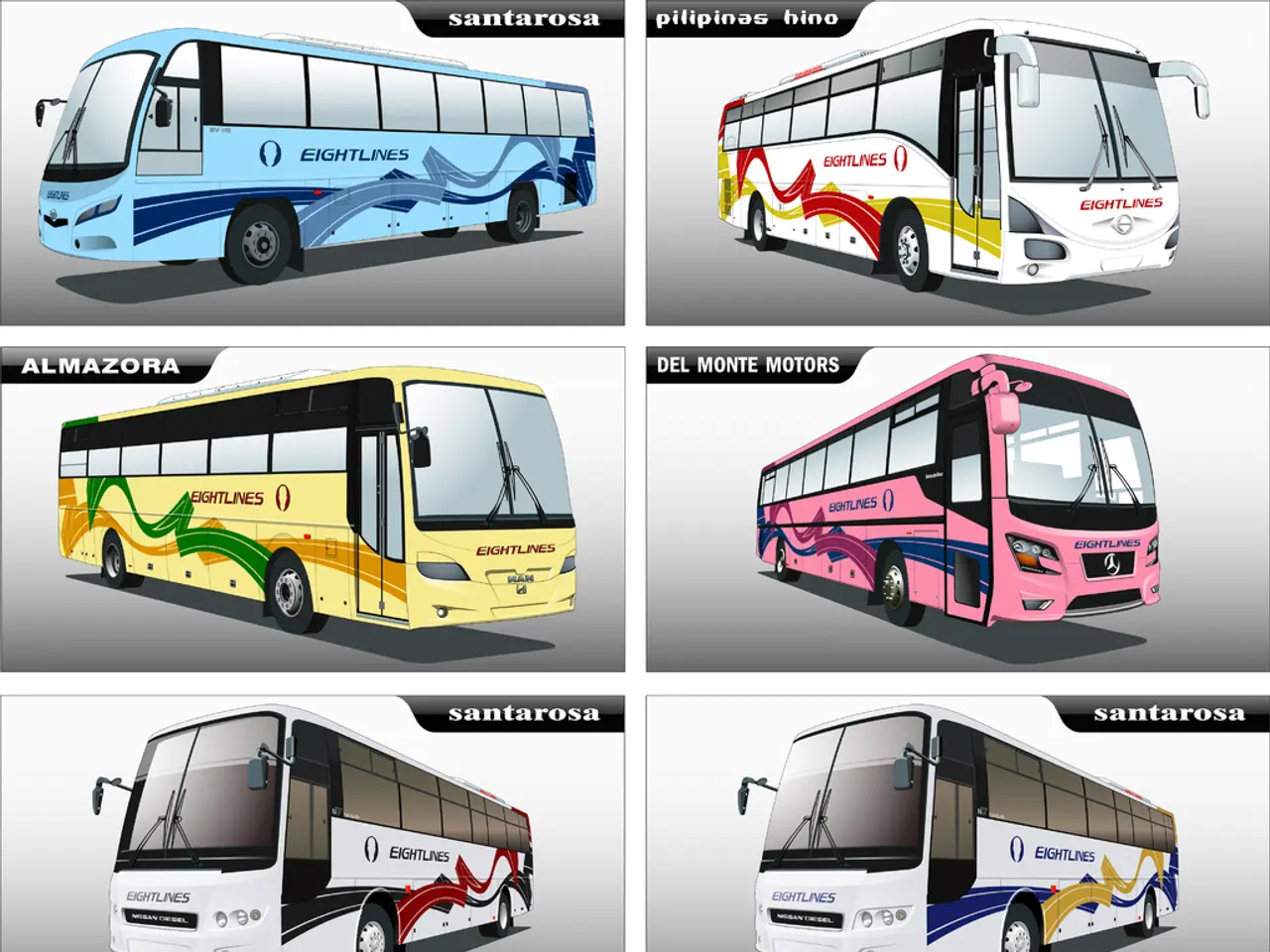Averaged daily ridership of public transport in Dubai reached approximately 2.8 million individuals during the initial half of 2025.
In the vibrant city of Dubai, the first half of 2025 has seen a significant surge in public transport usage. With a total of approximately 395.3 million rides, there has been a 9% increase compared to the same period in 2024, when the total count was 361.2 million rides[1][2][3].
This growth is a testament to the increasing public confidence and reliance on Dubai’s expanding and modernizing multi-modal transport network[1][2][4]. The network, which includes Dubai Metro, Dubai Tram, public buses, marine transport, taxis, and shared mobility options such as app-based vehicles, hourly rentals, and on-demand buses, catered to an average of 2.18 million passengers daily during the first half of 2025, an increase from 1.98 million in the same period last year[1][2][3].
Dubai Metro accounted for the largest share at 36.5% of total ridership. Taxis followed closely with a 26% share, while public buses contributed 24% of the ridership[1][3][4]. Other modes included Dubai Tram, marine transport (abras, ferry, water taxi, water bus), e-hail rides, smart car rentals, Bus-On-Demand services, and shared mobility options like app-based vehicles and hourly rentals[1][3][4].
May 2025 recorded the highest monthly ridership with 68.8 million rides, with other months ranging between 61 and 68 million rides[1]. Notably, Union Station, Business Bay Station on the Red Line, Mall of the Emirates Station, Sharaf DG Station on the Green Line, Burj Khalifa/Dubai Mall Station on the Red Line, Stadium Station on the Green Line, Baniyas Station on the Green Line, BurJuman Station, and Al Rigga Station were among the busiest stations[1].
To further boost sustainability and reduce emissions, the Roads and Transport Authority (RTA) has signed agreements to procure 637 multi-sized buses compliant with the European low-emission standard 'Euro 6,' including 40 electric buses. These buses are scheduled to be delivered in 2025 and 2026, with the strategic objective to convert the entire public bus fleet to electric and hydrogen-powered vehicles by 2050[1].
Dubai Tram transported 4.9 million riders during the first half of 2025, while taxi services in Dubai transported 103.5 million riders from January to June. The total number of users of all marine transport modes reached 9.7 million, and shared mobility services served 37.6 million riders[1].
This upward trend in public transport usage underscores Dubai’s commitment to offering efficient, reliable, and environmentally friendly transport solutions, making daily mobility more accessible and convenient for its residents and visitors.
[1] Roads and Transport Authority (RTA) press release, June 2025. [2] Gulf News, "Dubai Metro, Buses see record ridership in H1 2025," June 2025. [3] Khaleej Times, "Dubai's public transport usage soars in H1 2025," June 2025. [4] Arabian Business, "Dubai's public transport ridership hits new high in H1 2025," June 2025.
- In the bustling city of Dubai, the growth in public transportation usage demonstrates an increase in trust and reliance, with 395.3 million rides recorded in the first half of 2025, marking a 9% increase from the same period in 2024.
- Dubai Metro, a significant part of the city's multi-modal transport network, accounts for the largest share of total ridership at 36.5%.
- The vibrant city's news outlets reported an increasing reliance on traditional taxis, which account for 26% of the total ridership, while public buses contribute 24%.
- Beyond Dubai Metro, taxis, and buses, other transport modes such as Dubai Tram, marine transport, e-hail rides, smart car rentals, Bus-On-Demand services, and shared mobility options like app-based vehicles and hourly rentals are also part of the growing network.
- To enhance sustainability and reduce emissions, the Roads and Transport Authority (RTA) plans to acquire 637 multi-sized buses compliant with the European low-emission standard 'Euro 6,' including 40 electric buses, with the objective of converting the entire public bus fleet to electric and hydrogen-powered vehicles by 2050.




